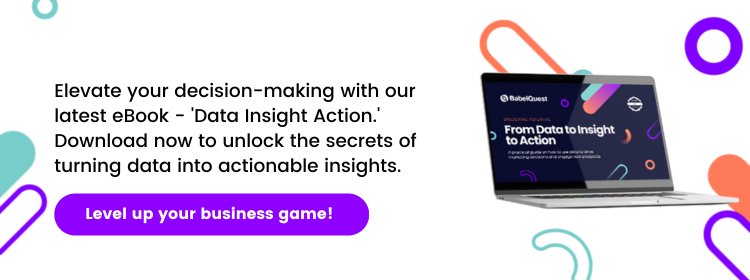It's data management 101: with so much data available at your fingertips, how can you be sure the information you’re collecting is actually useful?
Gathering information from industry and location, revenue and job role is all well and good, but does you actually need data on these categories? How will it benefit your business in the long run?
Businesses can evolve rapidly. The data you collect now versus the data you need to collect in 12 months' time will change. Maybe you decide on a new campaign that targets a different buyer. By taking a structured approach to data management, you’ll be better equipped to gather the data you need to inform your next marketing strategies.
Whether you’re a startup implementing your first CRM system or a mature organisation with 10,000 contacts and hundreds of fields for different campaigns, follow the steps below to streamline your data management and ensure you're only collecting the data you need.
Stage 1: Look at your business
 Consider the following questions, each of which will give you a solid foundation for looking at the kinds of data categories that will be of direct benefit to your business activities.
Consider the following questions, each of which will give you a solid foundation for looking at the kinds of data categories that will be of direct benefit to your business activities.
If you’re ahead of the game and have already answered the following questions (see below), then jump ahead to Stage 2.
- What problem are you solving? It doesn’t matter which market you’re in; every B2B business exists to help their customers solve a challenge. What is the value your business delivers?
- Who's experiencing the problem? Without buyer personas, you have no way of knowing how to speak to your target buyers and run the risk of delivering content that doesn’t resonate with them.
- What type of business are you and how is the team set up? Whether you’re a large B2B or small B2C business, the data categories you eventually use will depend on the size and nature of your company.
- What does your sales cycle look like? Different types of content and messaging will be more relevant at certain stages throughout the sales cycle.
"If part of your sales cycle involves a ‘proof of concept (POC)’ stage, then any relevant content you share with your prospect or client should focus on evaluation and building trust. It’s very different in tone from the content you'll have shared with them at the ‘attraction’ stage." Hollie Higa, Marketing Manager, BabelQuest
Stage 2: Identify the data your business needs to target, personalise, and inform
At this stage of the process, you can begin to identify the data categories from which you’ll be able to pull out applicable information for your business and put it through the ‘target, personalise, inform’ test.
Here's a refresher of what it means to target, personalise, and inform:
- Targeting data — data used for targeting allows you to reach the right people with the right message, as well as revealing previously undefined audience segments and demographics.
- Data you use to personalise interactions — personalisation is important as each customer journey is marked by different preferences.
- Data that could better inform other departments — it might not be directly relevant to your team, but this data will be used to inform departments (Marketing, Sales, Service etc.) across the business.
Identifying the data
When you know who you’re targeting, you can figure out the signals that indicate if someone is the right persona and whether they’re experiencing the problem your business solves', Hollie explains.
These signals in your data might come from engagement categories that indicate the success of interactions with content and social media posts, as well as technographic data, which identifies the technologies your target companies are using.
Stage 3: Collecting your data
After identifying the data your business needs to target, personalise, and inform, we recommend getting into the mindset of a data scientist. In a sales or marketing context, this means following certain processes to make sure the research and data are going to be accurate and relevant.
One approach is to use structured data across your site. Because structured data is collected from preset data fields, it’s easier to manage and fits cleanly together. Using unstructured fields and text-based formats will only lead to disorganised feedback and information filled with grammatical errors. In this process, ask yourself:
- Can each piece of data be structured with a drop-down list?
- Am I putting any unnecessary fields in the forms provided to contacts?
- Should I be utilising invisible fields?
Find out more about structured data in our free data-driven marketing guide.
What are the right data categories for your needs?
Assessing the relevance of your data is no simple thing.
Identifying the fundamentals to mapping out your business, figuring out the data categories needed to target, and ensuring the proper support and resources are in place to collect data are all a part of the process.
Follow the stages presented in this article to manage your data better and get actionable insights you can use to drive your marketing — and your business — forward.
Identifying meaningful data categories can be complex. To see how you can pull value from your data sets and turn the information into actionable insights, download our free ebook, From Data to Insight to Action: A Practical Guide on How to Use Data to Drive Marketing Decisions and Engage Prospects’.



 Consider the following questions, each of which will give you a solid foundation for looking at the kinds of data categories that will be of direct benefit to your business activities.
Consider the following questions, each of which will give you a solid foundation for looking at the kinds of data categories that will be of direct benefit to your business activities.


.png?width=50)

.png?width=50)
.png?width=50)


































